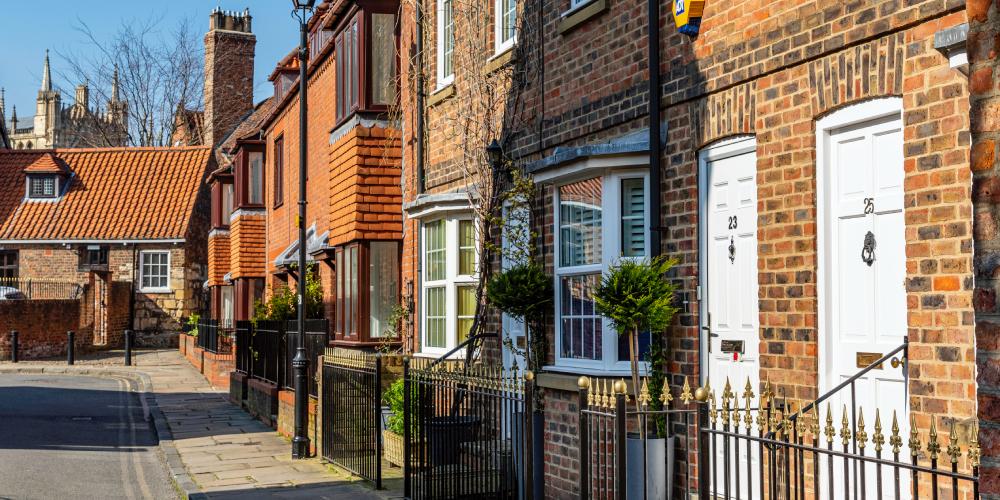You no longer have a mortgage or have inherited a property, and now you’re hearing about “unencumbered mortgages” but feeling confused about what this actually means.
Perhaps you need to access funds but don’t want to sell your property, or you’re wondering how to use your paid-off home to invest in another property.
Owning property outright puts you in a remarkably strong position when it comes to borrowing money.
Your confusion is understandable because, first of all, “unencumbered mortgage” is a bit of a mouthful.
We aren’t talking about a specific mortgage product as such, it’s about the enhanced options available because of your property’s debt-free status.
This guide will clear up the terminology and show you exactly why lenders favour unencumbered properties so much.
What Does Unencumbered Property Mean for Borrowing?
When your property is ‘unencumbered’, you own it completely – no outstanding mortgage, no secured loans, and no charges registered against it at the Land Registry.
This puts you in an enviable position that lenders love.
Think of it like this: if you wanted to borrow money from a friend, they’d be much more comfortable lending if you could offer them something valuable as security that nobody else has a claim on.
That’s exactly how lenders view your unencumbered property.
(A mortgage is an encumbrance: this is any claim, charge, or restriction on a property that limits the owner’s rights or affects its value)
Why Your Position Is So Strong
The difference between your situation and someone with equity in a mortgaged property is significant.
You own 100% of the property equity.
Lenders see unencumbered property as premium security, with no other lenders getting in the way.
This translates into better loan-to-value ratios for you.
A loan-to-value ratio (LTV) is simply the percentage of your property’s value that a lender will let you borrow. Lower risk for them means better terms for you.
Here’s where many people get confused: you don’t need a special “unencumbered mortgage” product.
Instead, you have access to standard mortgage products but with enhanced terms because of your strong security position.
Your Borrowing Options
Your debt-free property opens up several different ways of accessing the equity.
Residential Mortgages on Unencumbered Property
This involves taking out a standard residential mortgage against your property, essentially reversing your mortgage-free status but giving you access to funds.
You’ll still own your home, but you’ll have monthly payments again.
The process works much like any mortgage application. Lenders will assess your income and affordability in the usual way, but they’ll offer better rates because your property equity provides excellent security.
Who this suits
Homeowners wanting to access equity for major home improvements, debt consolidation, or significant purchases without selling their property. You might use the funds to build an extension, help children with deposits, or consolidate expensive credit card debts.
The application process is straightforward because you’re already the property owner and don’t have an existing lender to deal with.
You’ll need current income evidence and the usual identification documents.
Buy-to-Let Mortgages for Investment
If you’re interested in property investment, your unencumbered home can be the foundation for building a rental portfolio.
You can use your property’s value as security to purchase buy-to-let properties, often accessing better LTV ratios than investors without as much security.
Depending on the available equity, you could either capital raise and pay for the buy-to-let outright, or use the money as a deposit, with the balance from a 75% LTV buy to let mortgage.
You’re essentially using your paid-off property as a stepping stone into property investment.
The application focus
Buy-to-let mortgages concentrate heavily on the potential rental income of the property you want to buy, but lenders will also need a minimum earned income of around £25,000pa.
Bridging Loans for Speed
When you need to move quickly, perhaps to buy at auction or secure a property before selling another, bridging loans offer speed that standard mortgages can’t match.
Your unencumbered property provides excellent security for short-term funding.
These loans are designed for situations where timing matters more than long-term cost.
You might use bridging finance to buy a property that needs renovation before it becomes mortgageable, or to secure a purchase while waiting for another property to sell.

The Six-Month Mortgage Rule: What It Means for Inherited Property
If you’ve recently inherited property and want to mortgage it quickly, you might encounter something called the “six-month rule.”
This industry guideline can unexpectedly limit your borrowing options, but understanding how it works helps you plan around it.
What Is the Six-Month Mortgage Rule?
The six-month rule is guidance originally issued by the Council of Mortgage Lenders (now UK Finance) that many lenders follow. The rule states that properties owned for less than six months may face restrictions when applying for mortgages.
The clock starts ticking from when the property gets registered with HM Land Registry, not from the completion date. Some conservative lenders extend this to 12 months, making it even more restrictive.
Why Does This Rule Exist?
The rule was introduced after the 2008 financial crisis to help prevent mortgage fraud and money laundering.
Before these restrictions, some investors would buy properties with minimal deposits, quickly remortgage them at inflated values, and pocket the difference. Some properties were even remortgaged on the same day as purchase.
The rule stops these “back-to-back” transactions and protects lenders from artificially inflated property valuations.
How This Affects Inherited Property
When you inherit property, you become the legal owner from the date of death, but the Land Registry transfer happens later.
The six-month period starts from when the property gets registered in your name at the Land Registry.
Common Scenarios
Immediate borrowing needs: If you inherit property but need to access equity quickly for inheritance tax, property maintenance, or other urgent expenses, the six-month rule might limit your mortgage options initially.
Investment plans: You might inherit a property and want to mortgage it to buy additional investment properties. The rule could delay these plans unless you use lenders who ignore it.
Property improvements: If the inherited property needs significant work before you can live in it or rent it out, you might want to mortgage it to fund renovations. Again, timing becomes important.
How Different Lenders Handle the Rule
Not all lenders apply the six-month rule equally:
Strict adherence: Some major lenders won’t consider any mortgage application on properties owned for less than six months, regardless of circumstances.
Flexible approach: Other lenders are more understanding, particularly for inherited property where the ownership transfer wasn’t by choice.
Rule ignorers: Around 30 lenders will consider applications within the six-month period, especially with good reasons and strong applications.
Complete exemptions: Some specialist lenders don’t apply the rule at all, though they might have other criteria or higher rates.
Potential Workarounds
If you really must borrow against a property within the ‘six month window’ then you’ll need a mortgage broker to help you.
There are quite a few lenders who aren’t so bothered about how long you’ve owned the property, but this does mean that a lot of lenders won’t be approachable.
An experienced broker will be able to find the right lender for your needs.
Accessing Your Equity
The process starts with understanding exactly what you want to achieve and how much money you need.
Maximum LTV Ratios: How Much You Can Actually Borrow
Your mortgage-free property puts you in a strong position, but lenders still have maximum loan-to-value limits that vary by product type and your circumstances.
Residential mortgages can go up to 90% LTV, and buy to let up to 75%.
The LTV is calculated against the mortgage lenders valuation, either desktop or in-person.
Bridging loans can offer higher LTV ratios because they’re short-term, sometimes reaching 80-85% on unencumbered property. The security strength of debt-free property makes lenders more comfortable with higher lending ratios.
Borrowing Limits Beyond LTV
LTV ratios aren’t the only factor limiting how much you can borrow. Your income plays an equally important role in determining your borrowing capacity.
When borrowing against your own home, your potential new mortgage will depend on your income and monthly affordability.
Income multiples still apply even with excellent security and most lenders will offer 4-5 times your annual income before looking at affordability.
Combined limits mean your borrowing is restricted by whichever is lower, the LTV limit or the income, based limit.
Having an unencumbered property worth £600,000 doesn’t guarantee a £450,000 mortgage if your income only supports £300,000 of borrowing.
Age Considerations
Age significantly affects your borrowing options, even with no mortgage. The majority of lenders have upper age limits that could restrict your mortgage term or borrowing amount.
Standard age limits vary by lender but commonly end between 70-85 years old.
Some lenders calculate this as your age when the mortgage term ends, while others focus on your age when you apply.
Retirement income assessments becomes important if you’re approaching or already in retirement. Lenders need to see that your pension income, investments, or other retirement funds can support mortgage payments throughout the loan term.
Documentation and Timelines
For a mortgage on your home that requires monthly payments, you will need to demonstrate sufficient income and affordability to the lender. This will require proof of income, credit search and copies of your bank statements.
A residential remortgage should take around 4 weeks, while bridging loans can be done in 5-10 days.
Capital Raising Mortgages
Our guide will walk you through how capital raising mortgages work, what you can spend the money on, and where to get one.

Why Do People Need to Get an Unencumbered Mortgage?
Understanding why someone would choose to mortgage a property they already own outright helps clarify whether this approach suits your situation.
The reasons vary widely, from seizing investment opportunities to dealing with unexpected life events.
The lender will ask why you need the money, and most reasons will be valid. If you are at all unsure, speak to your mortgage adviser.
Property Investment and Portfolio Growth
Many property investors use their unencumbered homes as stepping stones to build rental portfolios.
Rather than saving for years to buy a second property with cash, they can access their home’s equity immediately and start generating rental income.
A £500,000 unencumbered home could provide access to £375,000 for buy-to-let purchases, potentially buying multiple rental properties.
Portfolio diversification also drives this decision, allowing investors to spread risk across different areas or property types faster than relying solely on rental income.
Business Funding and Growth Capital
Business owners frequently find that using residential property as security offers better rates than unsecured business loans.
Banks view property-secured lending as lower risk, translating into more competitive borrowing costs.
Start-up capital for new businesses often comes from property equity when entrepreneurs don’t qualify for unsecured funding.
Commercial property purchases sometimes get funded through residential property mortgages initially, particularly for smaller business premises.
Family Financial Support
Parents increasingly use their property equity to help family members onto the property ladder.
With rising deposit requirements and house prices outpacing salaries, family assistance has become essential for many first-time buyers.
Deposit gifts funded through equity release help children buy homes while keeping the family property.
Education funding for university fees or professional training sometimes requires accessing property equity when other savings aren’t sufficient.
Home Improvements and Renovations
Major home improvements often require more capital than most people have available. Converting lofts, building extensions, or renovating can cost £50,000-£150,000 or more.
Using your home equity for improvements makes financial sense because the work should increase the home’s value.
Energy efficiency upgrades like solar panels or heat pumps require substantial upfront investment but offer long-term savings.
Debt Consolidation
People with multiple high-interest debts often find that borrowing against their property offers a cheaper way to clear everything.
Credit card debts and personal loans can carry much higher interest rates than secured mortgage products.
Financial simplification appeals to many people who want one manageable monthly payment instead of juggling multiple creditors.
Consolidating debts will often cost you more in interest, take advice before making any decisions.
What About Equity Release Mortgages?
If you’re 55 or older and own your home outright, equity release offers a completely different approach to accessing your property’s value.
Unlike standard mortgages that require monthly repayments, equity release lets you access funds without selling your home or making regular payments.
How Equity Release Works
Equity release mortgages work by giving you a lump sum or regular payments based on your property’s value, your age, and your health.
The loan, plus rolled-up interest, gets repaid when you die or move into long-term care, usually through selling your home.
The older you are, the more you can borrow.
A 60-year-old might access around 20-25% of their property’s value, while someone aged 75 could access 35-40% or more. Poor health can actually increase the amount available because it reduces life expectancy from the lender’s perspective.
Key Differences from Standard Mortgages
Unlike the mortgage options we’ve discussed, equity release doesn’t require affordability assessments based on income. Your age, property value, and health determine how much you can access, not your ability to make monthly payments.
You also can’t be forced to move out if you can’t make payments – because there aren’t any to make. The loan only gets repaid when you no longer need the property.
How a Mortgage Broker Adds Value
Mortgage brokers can access lenders and products that aren’t available directly to you.
Many specialist lenders work only through brokers, these deals often have better rates and higher LTV ratios than anything you’ll find online.
Expert Product Matching
With residential mortgages, buy-to-let, bridging loans, and equity release all available, choosing the right option needs expertise. Brokers compare the costs and benefits of different approaches, potentially saving you thousands over the loan term.
Age and Retirement Specialists
If you’re approaching retirement or already retired, brokers know which lenders welcome older borrowers with property assets. While high street banks might reject your application due to age, specialist lenders could offer excellent terms.
Ongoing Support
Brokers handle the complex paperwork, coordinate with valuers and solicitors, and solve problems that arise during the application process.
A good broker relationship continues after your mortgage starts. They monitor the market for better deals, advise on refinancing opportunities, and help adapt your borrowing strategy as your needs change.
Frequently Asked Questions
Unencumbered means you own your property completely with no mortgage, secured loans, or charges registered against it at the Land Registry. It’s a debt-free property that you own 100% outright.
No, there’s no specific product called an “unencumbered mortgage.” The term refers to the enhanced mortgage options available to people who own property without any existing debt secured against it.
For residential mortgages, up to 90% LTV is possible, though 85-90% is more common. Buy-to-let mortgages typically max out at 75-80% LTV. Your income also limits borrowing through affordability assessments.
Yes, lenders must still assess whether you can afford the monthly repayments regardless of how much security you can provide. Income and expenditure checks are mandatory under current FCA regulations.
Yes, though options become more limited. Some lenders specialise in lending to retirees, particularly those with substantial property assets. Your pension income needs to support the mortgage payments throughout the term.
Read more: What is a retirement mortgage, and how do they work?
Property investment, business funding, helping family with deposits, major home improvements, debt consolidation, and seizing time-sensitive opportunities like auction purchases are the main drivers.
When you own an unencumbered property and want to borrow against it, you’re taking out a mortgage, not a remortgage. Remortgaging usually means replacing an existing mortgage with a new one, but since you don’t currently have a mortgage, you can’t technically remortgage.
That said, lots of people do use the terms interchangeably.


